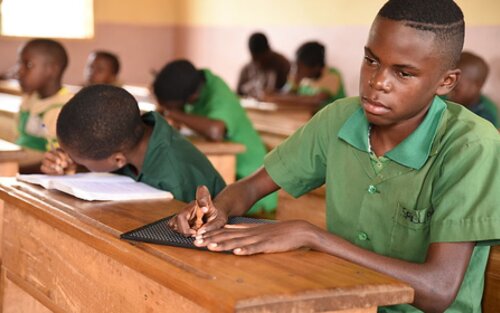The status of inclusive education in Kenya.
Article 54 of the constitution (1) (b) provides that persons with disabilities be entitled access to educational institutions and facilities for persons with disabilities that are integrated in the society to the extent compatible with the interests of the person. The Ministry of Education in Kenya has met the first component of the provision but has failed significantly on the second, which requires that integration be compatible with the interests of the person.

Inclusive Education in Class (CBM)

Consequently, learners in integrated schools have had to deal with challenges in these esablishments, ranging from inappropriate infrastructure, inadequate facilities, inadequate equipment, incapacity of teachers tocater learners' special needs, inadequate and inappropriate placement of children with disabilities, inadequate and expensive learning materials and inadequate supervision and monitoring of special education programs.
Thus, it is clear that Kenya has taken a misinformed approach of integration without full inclusivity. While integration is understood to support and welcome diversity among all learners, steps need to be taken to eliminate discrimination and provide accommodation to all disadvantaged students. Rather than being a marginal theme on how some learners can be integrated into mainstream education, inclusive education is an approach that looks to transform education systems in order to respond to the diversity of its learners.
Kenya has failed to undertake this noble task by hiding in the disguise of integration as an end to inclusive education rather than a means. The current laws in Kenya, extensive as they may be, have no effect on the actual development of inclusive educational practices. They are merely a theoretical framework that is hardly practicable.
In order for Kenya to comply with Article 24 of the CRPD, a shift in perspective on how to define an inclusive education system is imperative. When section 1 of article 24 of the CRPD calls for an inclusive education, it does not call for inclusive classrooms. Kenya has understood it to be synonymous with integration and proceeds from the presumption that, for example, putting a deaf child in a regular classroom without support constitutes inclusive education.
Author: Betty Nkirote LLB, Moi University, Dip KSL
